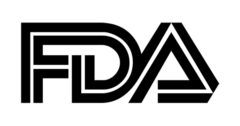
FDA released the Custom Device Exemption final guidance document to clarify key aspects of the provision contained in Section 520(b) of the FD&C Act, and to address changes brought about by revisions from the FDA Safety and Innovation Act (FDASIA).
FDASIA changes to the custom device exemption provision determined: new and modified existing devices can potentially qualify for the custom device exemption; the potential for no more than five units of a device type (in a given year) to qualify for exemption; an annual reporting requirement and a guidance document to determine what counts as five multiple units of a device type.
510(k) Device Rules
Modifications to a 510(k)-cleared device that maintain its original intended use and could be clinically studied cannot qualify as a custom device. However, if the manufacturer modifies an existing 510(k)-cleared device to treat a unique pathology or unique physiological condition, which renders clinical study impractical, the device could potentially qualify as a custom device.
Five Unit Maximum
Manufacturers are allowed to produce five valid new custom devices per year for a particular device type, provided all requirements are met. This includes all device types provided by a manufacturer to, and remaining in possession of, the physician and/or the patient.
Devices either returned to the manufacturer or destroyed by the physician are not counted. If four different sizes of a custom implant are made for a specific patient, and one of those devices is ultimately implanted into the patient, the remaining three sizes should be returned to the manufacturer or destroyed by the physician. If they are not, FDA considers four of the five total units per year of that particular device type to have been used. However, if those three units are returned to the manufacturer or destroyed by the physician, FDA counts only one of the five units per year to have been used.
If a patient requires multiple devices of the same type (for example, bilateral joint replacement) to treat multiple anatomical locations within a given year, it is counted as one unit, as long as those devices are ordered together and the physician either destroys any unused devices, or the devices are returned to the manufacturer and not redistributed without proper U.S. marketing authorization or used for another custom device case.
Annual Report Requirement
The manufacturer of a custom device must report to FDA annually on the custom devices it supplied over the course of a one-year reporting period. Manufacturers must include an account of custom devices that were returned or destroyed, the number of patients who received a device or revisions of a previous custom device, and an account of each custom device if multiple custom devices were used in one patient.
Each annual report must cover an entire calendar year. The first report should cover information on custom devices manufactured from July 9, 2012 (the date of FDASIA enactment) through the date of the first report. Annual reports are to be submitted to FDA within the first quarter of the following calendar year (no later than March 31).
Common Questions Outlined in the Guidance Document
Q: What premarket and postmarket requirements are custom devices exempt from fulfilling?
A: Custom devices are exempt from Premarket Approval requirements as conformance to mandatory performance standards. Custom devices are not exempt from any other regulations, including quality system regulations, including design controls, medical device reporting, labeling, corrections and removal, and registration and listing.
Q: Can a device subject to an investigational device exemption (IDE) be a custom device?
A: No, a device that is currently being studied or capable of study under an IDE does not meet the definition of a custom device. There is no reason to seek a custom device exemption for a device capable of study under an IDE, because custom devices are a narrow category of devices used to treat rare conditions or rare physician needs for which clinical investigations cannot be conducted.
Q: How do you label a custom device?
A: Custom devices remain subject to all device labeling requirements, among them requirements that the labeling bear adequate directions for use or may not be false or misleading, as well as many other labeling requirements, including those in 21 CFR 801.1.
The label should include:
- Statement that the device is a custom device
- Name of the ordering physician
- Identifying information for the patient (if applicable) whom the device is intended to treat
- Indications for use
- Sterilization status
- Relevant composition information (materials, components, etc.)
- Storage conditions
For further explanation of the custom device guidance, FDA hosted a webinar that outlines the changes.
Please send comments on this article to Carolyn LaWell.




